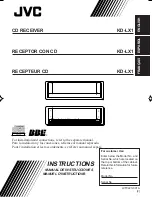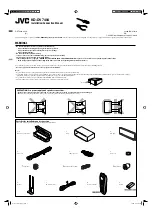
Call Director
Operating Mode
Indicates the Mode Name and Number for which the displayed Block Pointers' Targets are active.
Each Operating Mode is given an unique Number by the system. Valid numbers are 01 - 99, and are assigned in
sequence as new Modes are created. Pressing ENTER at this field opens a Target Generator, from which an existing
Mode Name may be selected, or a new name may be entered. Entering a new name creates a new Mode with its cor-
responding Number. The Mode Number and Name are associated with the Block's Pointers, not the Block itself. This
allows one Block to route calls to different destinations in different Modes, using different Targets for the pointers'
various Mode references. For example, the No-Answer pointer might route callers to an associate's Extension during
the 'Day' Mode, but after 5:00 PM, it would route them to a Mailbox during the 'Night' Mode. Pointers set in the
Default Mode are always in effect unless the same Pointer is set in the current Operating Mode. The SVMi-8 will dis-
play Default Mode pointers in a block while viewing pointers in another mode. The Default Mode pointers will be
grayed out to denote that they are not in the current mode.
CallDirector Event Pointers
To edit any of the event Pointers, press ENTER to bring up the Target Generator. Select
and open the appropriate Block type from the Target Generator pick list. Choose a new or existing Block of that type.
Press ‘Ctrl + O' to review or edit the chosen Block. Translation Pointers may be used to alter call progress results.
NO-ANSR Pointer
SVMi-8 goes immediately to the designated target Block when a ring-no-answer condition is
encountered. It will not prompt the caller prior to doing this.
BUSY Pointer
SVMi-8 goes immediately to the designated target Block when a busy condition is encountered. It
will not prompt the caller prior to doing this.
FBUSY Pointer
SVMi-8 goes immediately to the designated target Block when a fast busy condition is encountered.
It will not prompt the caller prior to doing this.
BLOCKED Pointer
SVMi-8 goes immediately to the designated target Block when call blocking is activated in the
extension administration menu. It will not prompt the caller prior to doing this.
ERROR Pointer
SVMi-8 goes immediately to the designated target Block when an error is encountered during the
transfer. It will not prompt the caller prior to doing this.
Block Types and Descriptions
54
EExxtteennssiioonn B
Blloocckk
Page 4 of 5
















































